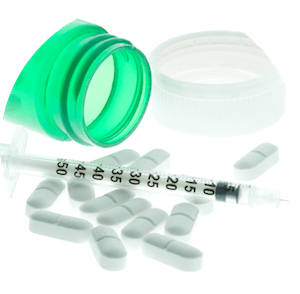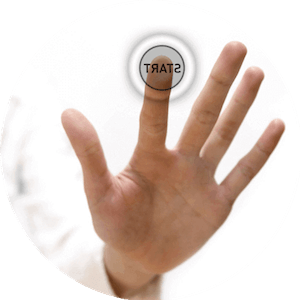The standard hair drug test can test for the presence or absence of up to 60 drugs in a world-class forensic facility offering a 5-10 business day turnaround time.
Below is a list of drugs tested. The lab processing time for a forensic toxicologist to analyse a single or multiple drugs is same hence time frames or fees cannot be varied. Those highlighted in Red are drugs that attract the most attention.
CANNABINOIDS & SYNTHETIC CANNABINOIDS
cannabis (marijuana, tetrahydrocannbinol, Delta 9-THC, THC-COOH)
Is a widely smoked or ingested illicit drug. Scientific studies can neither confirm or deny long-term harmful effects as research is difficult to conduct on a drug substance that is banned in most countries. Marijuana can be detected in urine for only up to 30 days after it is taken. In contrast, Marijuana can appear in hair many months after it is consumed and is impervious to tampering making hair testing is a good choice. Individual may be able to “beat” a urine test but NOT a hair drug test.
Designer drug compounds such as synthetic marijuana are NOT routinely included in the forensic lab’s normal range of analytes. They are excluded as they are difficult to detect due to a large variety of different types of synthetic drugs, hence validating and detecting accurately is not possible. The main problem with testing synthetic marijuana is by the time the lab has worked out how to accurately detect it, a new one is invented hence impossible to catch up and keep up. Synthetic marijuana is also known as Kronic, Purple Haze, Voodoo and Kaos.
AM-2201 (1-(5-fluoropentyl)-3-(1-naphthoyl)indole
AM-2201 is a designer cannabinoid linked to overdose cases. The effects of the drug is similar to other synthetic marijuana products like K2 and Spice which could include extreme anxiety, hallucinations, vomiting and seizures.
JWH-018
JWH-018 arguably is the most widely known synthetic cannabinoid.
DESIGNER DRUGS (Synthetic Cathinones)
MDPV
Methylenedioxypyrovalerone is a stimulant speeding up the messages between the brain and the body and has similar effects to amphetamines. Originates from the khat plant.
mephedrone
Mephedrone is a synthetic stimulant drug of the amphetamine and cathinone classes. It is often described as being like a mix between speed, ecstasy and cocaine.
STIMULANTS & HYPNOTICS
cocaine (norcocaine, ecgonine methyl ester, cocaethylene)
Cocaine is one of the most widely used illicit drugs all over the world. It is used medically as a local anaesthetic.
Cocaine can be detected in urine for only up to 3 days after it is consumed. In contrast, cocaine can appear in hair months after it is consumed making hair testing is a good choice to exonerate or implicate individuals.
benzoylecgonine
Benzoylecgonine is a byproduct of cocaine metabolism, it cannot be produced by other means. It is sometimes used as a topical anaesthetic.
amphetamine (AMP, speed)
Amphetamine and Methamphetamine are illicit drugs. They are used medically in the treatment of ADHD, narcolepsy, obesity and depression which has not responded to other treatments.
Amphetamines abuse can be detected in urine for only a few days after it is consumed. In contrast, amphetamines can appear in hair months after it is consumed making hair testing is a good choice to exonerate or implicate individuals.
MDMA (ecstasy)
3,4-methylenedioxymethamphetamine (MDMA) is commonly known as ecstasy and belongs to the amphetamine class of drugs.
It can be used in anxiety-related conditions or PTSD (post-traumatic stress disorder) psychotherapy where emotional defences are lowered as it induces a state of intimacy, compassion, euphoria, enhances self-evaluation and reduces anxiety and fear.
MDA (sass)
3,4-Methylenedioxyamphetamine is a psychedelic drug of the amphetamine family. MDA acts most importantly as a serotonin-norepinephrine-dopamine releasing agent
methamphetamine (Ice, MAMP)
Methylamphetamine (methamphetamine hydrochloride) is most structurally similar to amphetamines. it is commonly referred to as “crystal meth”, “meth”, “speed”, “crystal” or “ice”.
It increases alertness, concentration, energy, and in high doses, can induce euphoria, enhance self-esteem and increase libido.
It also is responsible for “meth mouth” (fast decaying teeth) and increases the incidences of aggression, paranoia, hallucinations and obsessive behaviours.
ketamine (ketalar)
Ketamine is primarily used as an anaesthetic and sedative. It can be prescribed for bipolar, depression, asthma or treatment of COAD (Chronic Obstructive Airway Disease). It is known as a “dissociative anaesthetic” giving an out of body near-death experience (commonly referred to as the “K-Hole”). A dreamlike state with a sense of detachment from the environment and self, hallucinations and distortion of sight and sound. One of the side effects is memory loss hence used as a “Date Rape” drug.
norketamine
Norketamine is the major active metabolite of ketamine,
LSD (Lysergic acid diethylamide)
LSD is also known as “acid” is a hallucinogenic drug that can change the user’s perception of reality.
pseudoephedrine
pseudoephedrine is a decongestant that shrinks blood vessels in the nasal passages used to treat nasal and sinus congestion.
Phentermine (Adipex-P, Lomaira)
Phentermine is an amphetamine-like prescription medication used to suppress appetite.
Pyrovalerone (Centroton, 4-Methyl-β-keto-prolintane, Thymergix, O-2371)
Pyrovalerone is a psychoactive drug with stimulant effects used to treat chronic fatigue or lethargy and as an appetite suppressant for weight loss.
NARCOTIC ANALGESICS (OPIATES & OPIOIDS)
heroin (diacetylmorphine)
Heroin is the common name for this drug which is used recreationally. It is very addictive and is responsible for a high level of drug-induced fatalities. It is mostly taken intravenously and less commonly smoked.
It is sometimes used in hospitals to relieve severe pain caused by trauma, heart attack and other terminal illnesses.
6-MAM (6-monoacetylmorphine)
6-MAM is one of three active metabolites of heroin. The others being morphine and the much less active 3-monoacetylmorphine. A metabolite is a chemical compound that is produced during the break down of the parent compound.
morphine
Morphine is an opiate drug use to relieve pain ranging from heart attack to childbirth. It is the gold-standard treatment for very severe pain but has a high potential for addiction.
normorphine
Normorphine is an opiate, a derivative of morphine.
buprenorphine
Buprenorphine is an opioid used to treat opioid use disorder, acute pain, and chronic pain.
norbuprenorphine
Norbuprenorphine is a major active metabolite of buprenorphine.
fentanyl (innorvar)
Fentanyl is a strong synthetic narcotic analgesic (100 X stronger than morphine) and is used as a painkiller or as a general anaesthetic.
It is fast-acting but short-lasting. It is often used as sublingual (under the tongue) spray for cancer patients, root canal treatments, and a component in the epidurals used during childbirth.
Fentanyl can be fatal if taken in sufficient quantities.
norfentanyl
A major metabolite of fentanyl.
methadone ( & EDDP)
Methadone is primarily used for pain relief. It is also used in the treatment of opioid dependency as it has some of the same effects of heroin without the addictive quality. EDDP is a metabolite of methadone.
alfentanil
Alfentanil is a potent but short-acting synthetic opioid analgesic drug used for anaesthesia in surgery.
remifentanil
Remifentanil is a potent, short-acting synthetic opioid analgesic drug. It is given to patients during surgery to relieve pain and as an adjunct to an anaesthetic.
codeine (codine)
Codine is an opiate and prodrug of morphine used to treat pain, coughing, and diarrhea and is commonly abused. It is found naturally in the sap of the opium poppy. Codeine is a drug used in many over the counter medications such as Pandeine, Tylenol, Nurofen Plus and some cough syrups. It is also used in anti-diarrhoea medications and as a medication to suppress coughing.
norcodeine
Norcodeine is a derivative of codeine.
oxycodone (roxicodone, oxyIR, oxyfast, oxycontin)
Oxycodone is an opiate painkiller used for moderate to severe pain relief for acute and chronic conditions.
pethidine
Pethidine is used in hospitals as a painkiller for moderate to severe pain. Australia has strict limits on its use and it is now mainly used during childbirth and in some emergency departments.
norpethidine
Norpethidine is a metabolite of pethidine.
tramadol (ultram)
Tramadol is an opioid pain medication used to treat moderate to moderately severe pain.
desmethyltramadol
Desmetramadol, also known as O-desmethyltramadol, is an opioid analgesic and the main active metabolite of tramadol
tapentadol (nucynta)
Tapentadol is a centrally acting opioid analgesic.
levorphanol
Levorphanol is an opioid medication used to treat moderate to severe pain.
hydrocodone (zohydro)
Hydrocodonesold is an opioid used to treat prolonged severe pain.
hydromorphone (dihydromorphinone, dilaudid)
Hydromorphone is an opioid used to treat moderate to severe pain, typically used long-term for cancer patients.
BENZODIAZEPINES & SEDATIVES
diazepam (valium, diastat, antenex, ducene,valpam)
Diazepam is used in the treatment of insomnia. It can also be used in the treatment of stroke and vertigo. It has sedative properties which can be used to help treat the symptoms of alcohol, benzodiazepine and opiate withdrawal.
rohypnol (flunitrazepam, roofies)
Flunitrazepam (date rape drug) is commonly known as the “date rape” drug or Rohypnol due to its ability to cause strong amnesia in addition to having a hypnotic effect as well as a relaxant and sedative. It is sometimes prescribed to treat severe insomnia.
alprazolam (zanax, xanax)
Alprazolam is used in the treatment of panic and anxiety disorders. It can also be used to sedate patients after chemotherapy to reduce their nausea and vomiting.
oxazepam (serepax, murelax, alepam, serax)
Oxazepam is a sedative used in the treatment of anxiety and depression as well as insomnia. It can be used to help with the symptoms of alcohol withdrawal and there is some evidence to suggest it may be helpful in the treatment of post-traumatic stress disorder.
nitrazepam
Nitrazepam is a hypnotic drug used in the treatment of moderate to severe insomnia. It has muscle relaxing properties which can relax muscles and help as an anti-convulsive for people who suffer from epilepsy. It does affect coordination and balance hence is sometimes responsible for hip fractures in the elderly.
7-amino-nitrazepam
7aminonitrazepam is a metabolite of Nitrazepam. A metabolite is a chemical compound that is produced during the breakdown of the parent compound.
clonazepam (kloe)
Clonazepamis a benzodiazepine drug and is primarily prescribed for epilepsy due to its anticonvulsant, muscle relaxing and hypnotic properties. It is also used to treat anxiety and panic disorders.
There is some medical evidence suggesting that it causes malformations in foetuses such as heart or facial deformations and lowers IQ when used in early pregnancy, however, the data is not conclusive.
7-amino-clonazepam
7aminoclonazepam is a metabolite of clonazepam which can be measured as a surrogate for clonazepam. A metabolite is a chemical compound that is produced during the breakdown of the parent compound.
7-amino-flunitrazepam
7-amino-flunitrazepam is a metabolite of flunitrazepam. A metabolite is a chemical compound that is produced during the breakdown of the parent compound.
bromazepam
Bromazepam is used in the treatment of anxiety and panic disorders. It is also sometimes used to reduce anxiety in people about to have surgery.
clobazam (fisium, onfi, urbanol)
Clobazam is used in the treatment of epilepsy due to its anticonvulsive properties.
triazolam (hyman, halcion, trilam)
Triazolam is a sedative used in the treatment of severe insomnia. It can also be used in the short term to help with jet lag. It can be used also during anaesthesia to prepare people for surgery.
lorazepam (ativan, temesta)
Lorazepam is mainly used in the short-term treatment of severe anxiety. It also has sedative effects which can be used to treat insomnia, however, withdrawal symptoms of both insomnia and anxiety can occur if it is used for too long. Its sedative properties can also be useful in helping to prevent vomiting and nausea in patients undergoing chemotherapy.
Lorazepam can also be used to treat the symptoms of alcohol withdrawal and is sometimes used to sedate patients in the hospital, especially those requiring mechanical ventilation and as a pre-medication during a general anaesthetic. It can also be used to treat epilepsy and other forms of seizures.
temazepam (restoril)
Temazepam is mainly used in the treatment of insomnia. As with other benzodiazepines it can cause unsteadiness and this can lead to falls and fractures, particularly in the elderly.
nordiazepam
Nordiazepam is a metabolite of diazepam and other benzodiazepines. A metabolite is a chemical compound that is produced when the parent compound is broken down.
midazolam (dormicum, hypnovel, flormidal)
Midazolam is mainly used in anaesthetics to sedate patients who are about to have a procedure or surgery. It can also be used in the treatment of insomnia, schizophrenia and epilepsy.
doxylamine
is a first-generation antihistamine used as a short-term sedative and hypnotic or in combination formulations to provide night-time allergy and cold relief.
dextromethorphan
Dextromethorphan is a medication most often used as a cough suppressant in over-the-counter cold and cough medicines.
promethazine
Promethazine is used to treat allergy symptoms such as itching, runny nose, sneezing, itchy or watery eyes, hives, and itchy skin rashes. It prevents motion sickness, treats nausea/vomiting or pain after surgery. Can also used as a sedative or sleep aid.
pentobarbital
Pentobarbital is a short-acting barbiturate typically used as a sedative, a pre-anaesthetic, and to control convulsions in emergencies.
phenobarbitone
Phenobarbitone is used to prevent seizures, commonly prescribed for those suffering from epilepsy.
primidone
Primidone is a barbiturate used to treat tremours and generalized seizures.
thiopentone
Thiopentone short-acting barbiturate used as a general anaesthetic. Also used as a hypnotic and anticonvulsant
zopiclone (imovane, lunesta)
Zopiclone is a tranquilliser that is mainly used in the treatment of insomnia where the symptoms are primarily to do with sleep initiation.
zolpidem (ambien)
Zolpidem used in the short term to treat insomnia.
NON-STEROIDAL ANABOLIC DRUGS
clenbuterol
Substances that currently CANNOT be tested in hair
- GHB (gammahydroxybutyrate) ~ as it’s too volatile
- Psilocybin (magic mushrooms) or its metabolite psilocin
- PCP (Phencyclidine) ~ No established Australian standard set for testing this drug
- Hyoscine (scopolamine)
- Olanzapine
**If we haven’t listed a drug you’d like tested, please email the details and we’ll forward your request to our forensic team. DO NOT CALL as reception admin staff cannot answer these types of questions.




